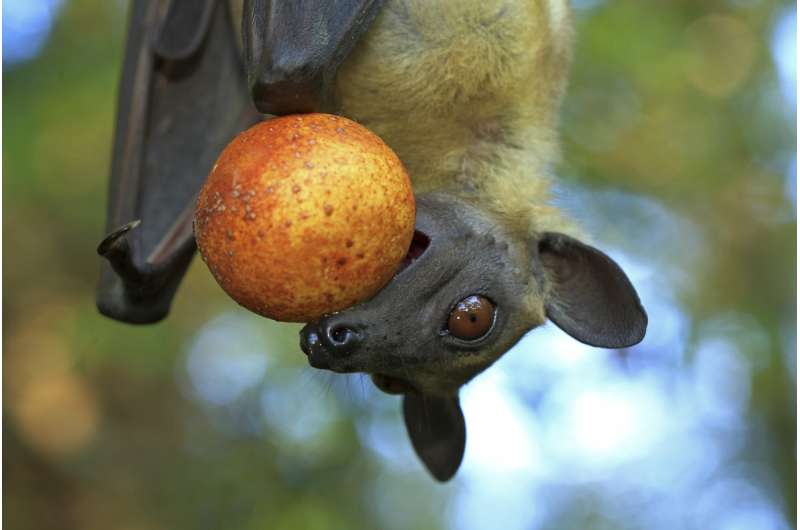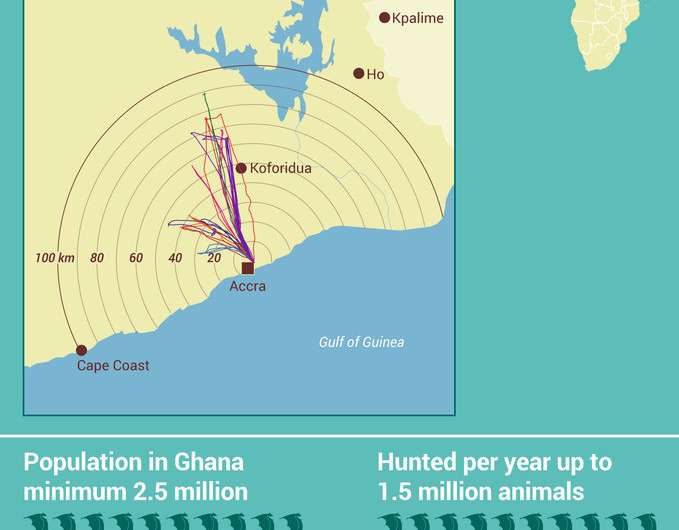Straw-coloured fruit bats love fruits above everything, for example date palms and mangos – or, as in this case, sugar plums c). However, they do not eat the whole fruit, but press out the juice and spit out the pulp. The nectar of Baobab trees is also on their menu. Credit: MPI f. Ornithology/ Ziegler
According to the report of the World Biodiversity Council IPBES 2019 on the global state of biodiversity, one million animal and plant species are acutely threatened with extinction. In addition, the overexploitation of the last 50 years has led to a massive decline in the performance of many ecosystems. One example of this is the ecological services of flying foxes in Africa, which are affected by the hunting of animals. Scientists at the Max Planck Institute for Ornithology in Radolfzell have calculated the financial value of a colony of palm fruit bats in Ghana for local people.
Animals not only pollinate crops, they also contribute to the spread of plant seeds. For example, flying foxes, which belong to the group of bats, eat fruit from trees and swallow the seeds they contain. On their nocturnal flights from the back to their sleeping tree, the animals excrete the seeds again. Unfortunately, hundreds of thousands of animals are still killed every year—with unforeseeable consequences for the biodiversity in African forests.
Credit: MPG
Provided by Max Planck Society

























